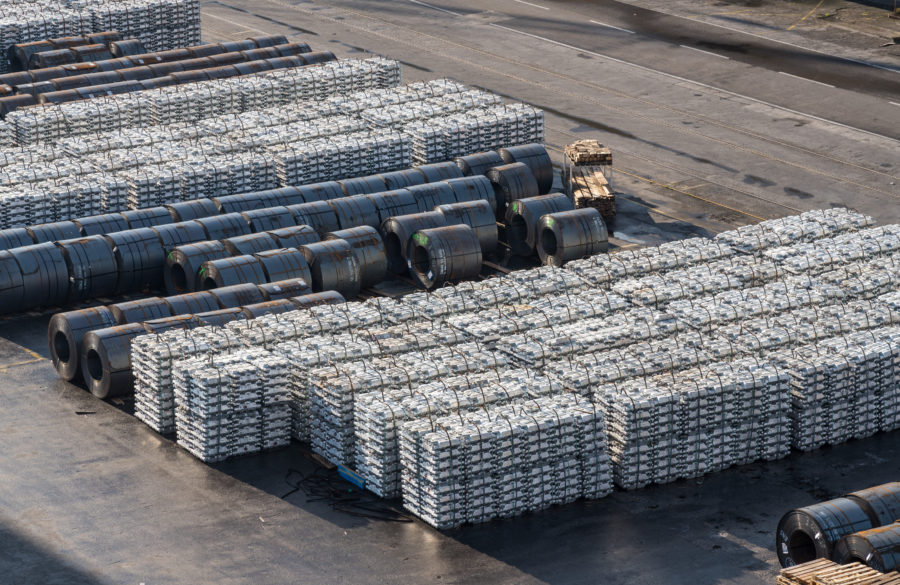Column: Tin’s bull flames doused by weak electronic goods demand

Tin is still the “forgotten” element in the energy transition story, according to the International Tin Association (ITA).
The metal’s demand profile has evolved from prosaic tin cans to soldering on circuit boards, making it a critical but under-appreciated input in both the energy transition and the coming internet-of-things.
It is “inevitable that the world will wake up to the significance of tin within the next decade,” the ITA said in a new report titled “TIN2030: A Vision for Tin.”
Right now, though, tin has fallen off the radar again after a turbulent 2022, when the London Metal Exchange (LME) three-month price soared to an all-time high of $51,000 per tonne in March only to crash back to a November low of $17,350.
An early-year recovery rally has fizzled out over the last two months, leaving the price hovering uncertainly around the $25,000 level.
Soldering demand from the electronics sector remains weak and investors in London and Shanghai continue to play the market from the short side.
Supply, however, is going through an equally bumpy patch and visible inventory is increasingly concentrated in China.
Tin may not stay off the radar for too long.
Weak demand
Refined tin use grew by 7.6% in 2021 but contracted by 0.6% last year, according to the ITA’s November survey of tin users.
Surging purchases of electronic goods during lockdown were followed by sharply reduced spending as many Western consumers were hit by a cost-of-living squeeze.
Global semiconductor sales, a proxy for tin usage in the all-important soldering sector, were $41.3 billion in January, down by 18.5% on January 2022, according to the Semiconductor Industry Association.
The demand dip has allowed the supply pipeline to refill from the depleted levels of 2021 and 2022, when both LME time-spreads and physical premiums flared to historically high levels.
The US Midwest premium has halved from its late 2021 highs to a current $1,850-2,350 per tonne over the LME cash price, according to the latest assessment from Fastmarkets.
Bumpy supply
The scale of surplus would be much greater were it not for the fact that tin supply also had a problematic 2022, global refined production rising just 0.3% to 380,400 tonnes.
Supply woes have rolled into 2023 with protests in Peru forcing local producer Minsur to suspend mining operations for several weeks and now impacting Bolivian operator Vinto.
Vinto, the world’s eighth largest tin producer, declared force majeure on deliveries to customers on March 7, citing delays in Peruvian coal supplies and finance issues, as reported by Fastmarkets.
Indonesian exports, meanwhile, slumped by 41% year-on-year to 4,724 tonnes during January and February.
Early-year disruption to supply from the world’s largest exporter of refined tin is an annual event, reflecting the processing of new export licenses.
This year, though, there is greater uncertainty than usual as the Indonesian government deliberates on how and when to implement a proposed ban on exports.
Indonesia is hoping to repeat the success of its export ban on unprocessed nickel, which has led to a massive build-out in domestic processing capacity.
The trouble with tin is that the country can only absorb around 5% of its national output, according to Ridwan Djamaluddin, a senior official at the Energy and Mineral Resources Ministry.
The most likely scenario is for a staged implementation, but the threat of more serious disruption to global flows of tin lurks in the background.

Investors bearish
Right now, though, investors appear more focused on tin’s poor demand picture.
LME positioning reports show both investment funds and other financial players are currently net short of the London tin contract after the early-year rally went into reverse.
Shanghai investors are also bearish. The January price recovery led to a sharp drop in open interest on the Shanghai Futures Exchange (ShFE) tin contract.
But participation has since surged as the price has dropped back to the $26,000 area. Market open interest registered a life-of-contract high of 137,828 lots earlier this month and is currently at a still elevated 114,292.

Shanghai stocks up, London stocks down
Reasons to be negative are more obvious in China. It’s where much of the recent global surplus seems to have accumulated.
ShFE registered tin stocks have risen by 60% to 8,745 tonnes since the start of January.
LME stocks, by contrast, are currently declining. Last year’s rebuild plateaued around the 5,000-tonne level in August. Headline inventory now totals just 2,480 tonnes. A 525-tonne flurry of cancellations on Friday has left live stocks at an even lower 1,600 tonnes.
LME time-spreads had spent the early part of 2023 in super-relaxed contango but flexed into backwardation last week. The cash premium over three-month metal closed Tuesday valued at $147 per tonne, the tightest it’s been this year.
The premium is still highly modest relative to early 2021, when it rocketed to $6,500 per tonne, suggesting the market has moved on from its period of peak scarcity.
But the combination of South American production hits and lower Indonesian exports will test just how much is available outside of China.
Chinese exports
China was a big net importer of refined last year, particularly from Indonesia. Imports from that country jumped from 3,500 tonnes in 2021 to 24,300 tonnes in what looks like a preemptive stocks build ahead of any export ban.
The strength of the Indonesian import flow masked a smaller counterflow of exports, some of them traveling all the way to Europe.
Those exports continued in the first two months of this year even as the import surge abated. More Chinese metal may be needed, judging by the current stocks imbalance between east and west.
And a lot more tin is going to be needed to meet demand by 2030, according to the ITA, which estimates the sector will require $1 billion investment to grow annual production by 50,000 tonnes by then.
For now, though, tin’s fortunes are delicately poised between fragile demand and stuttering supply.
(The opinions expressed here are those of the author, Andy Home, a columnist for Reuters.)
(Editing by David Holmes)
More News
Column: Europe’s future metals strategy hindered by current crisis
Chinese over-capacity and high energy prices have accelerated the long-term decline of European steel and aluminum production.
March 29, 2025 | 02:25 pm
Anglo starts talks with banks on possible De Beers IPO
Anglo is pursuing a dual-track process in its effort to exit De Beers by trying to find a buyer for the struggling business.
March 28, 2025 | 12:19 pm
{{ commodity.name }}
{{ post.title }}
{{ post.excerpt }}
{{ post.date }}



Comments